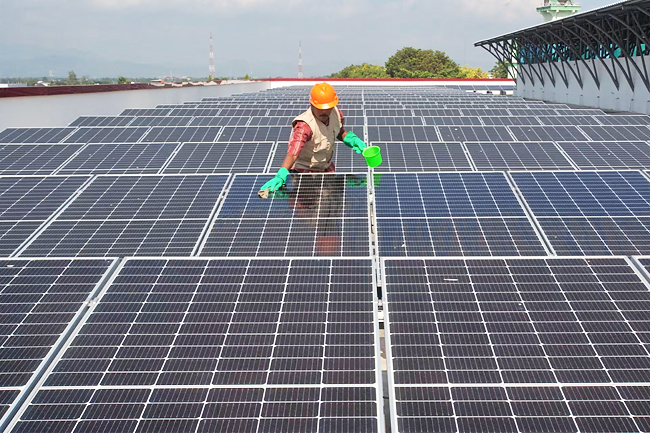ANN/THE JAKARTA POST – Renewable energy is emerging as a critical driver in the Asia-Pacific (APAC) region’s shift toward sustainable power, with countries like Indonesia poised to play an influential role.
Despite a modest starting point, renewable energy capacity in APAC is expanding at a compound annual growth rate (CAGR) of nine per cent. By 2030, renewables are projected to make up 30-50 per cent of the power mix in most APAC markets, according to Boston Consulting Group’s report Asia Pacific is Ready for Renewables.
The report highlights both the vast opportunities and the complex challenges facing renewable energy players in the region. To integrate renewables significantly, substantial investment will be required, with the International Energy Agency forecasting that APAC’s renewable investments could total USD286 billion from 2022 to 2030.
INDONESIA’S RENEWABLE ENERGY PUZZLE
Indonesia, one of APAC’s fastest-growing economies, faces a unique energy challenge. While the government has set ambitious renewable targets, affordable domestic coal has slowed the transition. National power generation has surged, tripling since 2000, to meet the rising demand, and Indonesia is aiming for net-zero emissions by 2060, with an interim target of 23 per cent renewable energy by 2025. However, this goal is likely to be missed without accelerated efforts.
Efforts to aid Indonesia’s shift from coal to renewables are underway. The Asian Development Bank (ADB) plans to use its Energy Transition Mechanism (ETM) to fast-track the decommissioning of the 660-megawatt (MW) Cirebon 1 coal plant, with agreements expected by end-2024.
Additionally, the USD20-billion Just Energy Transition Partnership (JETP) has been mobilised to support this transition.

While the shift has been gradual, Indonesia could gain significant benefits from enhanced renewable capacity. The country’s strategic position and resources make it a strong candidate for exporting green energy to neighbouring Singapore and fulfilling demand for corporate power purchasing agreements (PPAs) with sustainable commitments.
Essential strategies at play Renewable energy development across the APAC region is driven by several key elements, each adding momentum toward a sustainable energy future. One significant driver is reduction in costs. Advances in technology and economies of scale have made renewable energy increasingly competitive with traditional fossil fuel-based electricity generation.
This cost parity, particularly in solar, has accelerated the adoption of renewables in APAC, driving investment and the deployment of clean energy infrastructure. In navigating the renewable energy landscape across Indonesia and APAC, developers and investors must adapt to the diverse business environments in each market. Five key factors were identified for both developers and investors to consider: finding focus by concentrating efforts on specific markets and technologies; establishing local partnerships to access land and navigate regulatory landscapes; broadening financing options to address challenges of lower returns and increased competition; navigating the supply chain by integrating with local players and meeting local content requirements (TKDN); and leveraging off take expertise to gain a competitive edge in tender processes. Solar power offers a twin-track opportunity in Indonesia, with both distributed rooftop and utility-scale solar boasting solid potential for monetisation. Rooftop capacity is expected to expand by 3.5-4 gigawatts (GW) by 2030.
Rooftop technology is prioritised over ground-based solar, as it sidesteps land acquisition costs, making it more cost competitive. Retail tariffs for rooftop solar are expected to increase to above USD100 per megawatt-hour (MWh) produced. There is also no TKDN for rooftop installation, as well as strong PPA demand from corporates seeking sustainable energy. Utility-scale solar in Indonesia is also an interesting opportunity, with floating solar prioritised over ground-based solar due to the aforementioned land costs.
It is expected that around 5GW of additional floating solar capacity will be installed by 2030.
Floating solar also benefits from an average feed-in tariff of USD69.5 to USD172 per MWh, depending on the size and location of the facility. These projects are awarded through capacity auctions by state electricity company PLN. While PPA tariffs have been competitive, recent tenders have seen tariffs fall below USD50/MWh, a significant drop from the height of USD250/MWh seen in the last decade. Floating solar also has a high TKDN of greater than 40 per cent, as well as technological complexities in execution.
Indonesia also has the unique potential of having the world’s largest geothermal power reserves, although exploiting these remains costly and challenging.
It is estimated the country will have around 1.3 GW of additional installed geothermal capacity by 2030.




